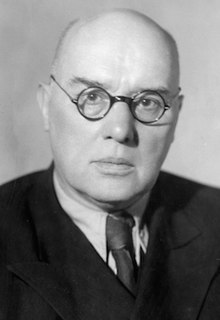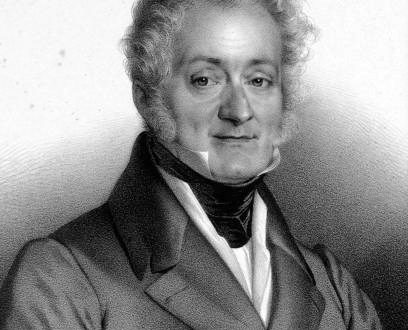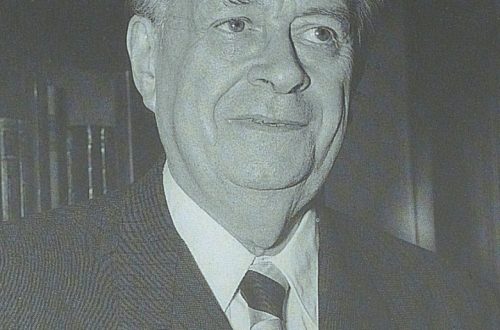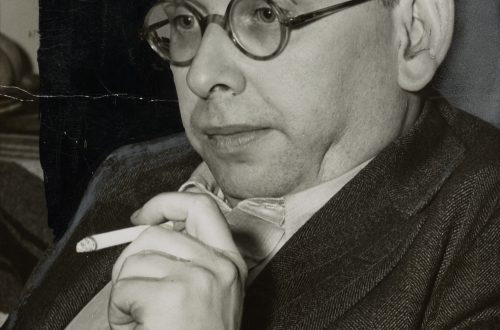
Yuri Shaporin (Yuri Shaporin).
Yuri Shaporin
The work and personality of Yu. Shaporin is a significant phenomenon in Soviet musical art. The bearer and continuer of the cultural traditions of the true Russian intelligentsia, a man with a versatile university education, who absorbed from childhood all the diversity of Russian art, deeply knowing and feeling Russian history, literature, poetry, painting, architecture – Shaporin accepted and welcomed the changes brought by the Great October Socialist Revolution and immediately actively involved in the construction of a new culture.
He was born into a family of Russian intellectuals. His father was a gifted artist, his mother was a graduate of the Moscow Conservatory, a student of N. Rubinstein and N. Zverev. Art in its various manifestations surrounded the future composer literally from the cradle. The connection with Russian culture was also expressed in such an interesting fact: the brother of the composer’s grandfather on the maternal side, the poet V. Tumansky, was a friend of A. Pushkin, Pushkin mentions him on the pages of Eugene Onegin. It is interesting that even the geography of Yuri Alexandrovich’s life reveals his connections with the origins of Russian history, culture, music: this is Glukhov – the owner of valuable architectural monuments, Kyiv (where Shaporin studied at the Faculty of History and Philology of the University), Petersburg-Leningrad (where the future composer studied at Faculty of Law of the University, at the Conservatory and lived in 1921-34), Children’s Village, Klin (since 1934) and, finally, Moscow. Throughout his life, the composer was accompanied by communication with the largest representatives of modern Russian and Soviet culture – composers A. Glazunov, S. Taneyev, A. Lyadov, N. Lysenko, N. Cherepnin, M. Steinberg, poets and writers M. Gorky, A. Tolstoy, A. Block, Sun. Rozhdestvensky, artists A. Benois, M. Dobuzhinsky, B. Kustodiev, director N. Akimov and others.
Shaporin’s amateur musical activity, which began in Glukhov, continued in Kyiv and Petrograd. The future composer loved to sing in an ensemble, in a choir, and tried his hand at composing. In 1912, on the advice of A. Glazunov and S. Taneyev, he entered the composition class of the St. Petersburg Conservatory, which he completed only in 1918 due to conscription. These were the years when Soviet art began to take shape. At this time, Shaporin began to work in one of its most important areas – the composer’s activities for many years were associated with the birth and formation of the young Soviet theater. He worked at the Bolshoi Drama Theater of Petrograd, at the Drama Theater of Petrozavodsk, at the Leningrad Drama Theater, later he had to collaborate with theaters in Moscow (named after E. Vakhtangov, Central Children’s Theater, Moscow Art Theater, Maly). He had to manage the musical part, conduct and, of course, write music for performances (20), including “King Lear”, “Much Ado About Nothing” and “Comedy of Errors” by W. Shakespeare, “Robbers” by F. Schiller, “The Marriage of Figaro” by P. Beaumarchais, “Tartuffe” by J. B. Moliere, “Boris Godunov” by Pushkin, “Aristocrats” by N. Pogodin, etc. Subsequently, the experience of these years was useful to Shaporin when creating music for films (“Three Songs about Lenin ”, “Minin and Pozharsky”, “Suvorov”, “Kutuzov”, etc.). From the music for the play “Blokha” (according to N. Leskov), in 1928, the “Joke Suite” was created for an unusual performing ensemble (wind, domra, button accordions, piano and percussion instruments) – “a stylization of the so-called popular popular print”, according to the composer himself.
In the 20s. Shaporin also composes 2 sonatas for piano, a symphony for orchestra and choir, romances on verses by F. Tyutchev, works for voice and orchestra, choirs for an army ensemble. The theme of the musical material of the Symphony is indicative. This is a large-scale, monumental canvas dedicated to the theme of revolution, the artist’s position in the era of historical cataclysms. Combining contemporary song themes (“Yablochko”, “March of Budyonny”) with a musical language close in style to Russian classics, Shaporin, in his first major work, poses the problem of the correlation and continuity of ideas, images, and musical language.
The 30s turned out to be fruitful for the composer, when his best romances were written, work began on the opera The Decembrists. The high skill, characteristic of Shaporin, the fusion of the epic and the lyrical began to manifest itself in one of his best works – the symphony-cantata “On the Kulikovo Field” (on the line of A. Blok, 1939). The composer chooses the turning point of Russian history, its heroic past, as the subject of his composition, and prefaces the cantata with 2 epigraphs from the works of the historian V. Klyuchevsky: “The Russians, having stopped the invasion of the Mongols, saved European civilization. The Russian state was born not in the hoard chest of Ivan Kalita, but on the Kulikovo field. The music of the cantata is saturated with life, movement, and the variety of human feelings captured. Symphonic principles are combined here with the principles of operatic dramaturgy.
The composer’s only opera, The Decembrists (lib. Vs. Rozhdestvensky based on A. N. Tolstoy, 1953), is also devoted to the historical and revolutionary theme. The first scenes of the future opera appeared already in 1925 – then Shaporin imagined the opera as a lyrical work dedicated to the fate of the Decembrist Annenkov and his beloved Polina Goble. As a result of a long and intense work on the libretto, repeated discussions by historians and musicians, the lyrical theme was relegated to the background, and heroic-dramatic and folk-patriotic motives became the main ones.
Throughout his career, Shaporin wrote chamber vocal music. His romances are included in the golden fund of Soviet music. The immediacy of the lyrical expression, the beauty of a great human feeling, genuine drama, the originality and naturalness of the rhythmic reading of the verse, the plasticity of the melody, the diversity and richness of the piano texture, the completeness and integrity of the form distinguish the best romances of the composer, among which are romances to the verses of F. Tyutchev (“What are you talking about howl, night wind”, “Poetry”, cycle “Memory of the heart”), Eight elegies on poems by Russian poets, Five romances on poems by A. Pushkin (including the composer’s most popular romance “Spell”), cycle “Distant Youth” on poems by A. Blok.
Throughout his life, Shaporin did a lot of social work, musical and educational activities; appeared in the press as a critic. From 1939 until the last days of his life, he taught a composition and instrumentation class at the Moscow Conservatory. The excellent skill, wisdom and tact of the teacher allowed him to bring up such different composers as R. Shchedrin, E. Svetlanov, N. Sidelnikov, A. Flyarkovsky. G. Zhubanova, Ya. Yakhin and others.
The art of Shaporin, a truly Russian artist, is always ethically significant and aesthetically complete. In the XNUMXth century, in a difficult period in the development of musical art, when old traditions were collapsing, countless modernist movements were being created, he managed to speak about new social shifts in an understandable and generally significant language. He was the bearer of the rich and viable traditions of Russian musical art and managed to find his own intonation, his own, “Shaporin note”, which makes his music recognizable and loved by listeners.
V. Bazarnova





